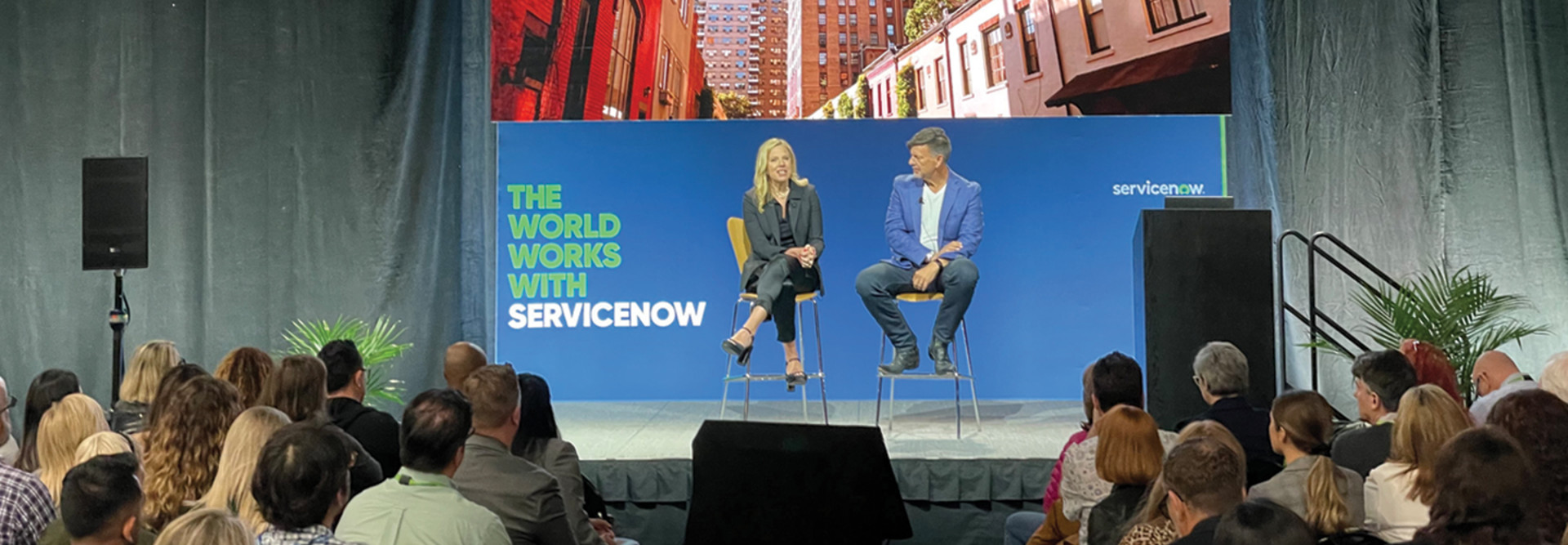Remote and Hybrid Work Requires a New Management Mindset
At the start of remote work, teams of employees that had previously worked from an office found themselves overwhelmed with meetings.
Companies didn’t have a system of trust, so when there was no in-person visibility into the work, managers instead scheduled “a million Zoom calls,” Wright said.
Managers needed a tool that provided insight into their team members’ tasks, deadlines and status. Digitally transformed workflows supply these insights, giving employees the freedom to work when and where they want without management oversight bordering on interference.
MORE FROM KNOWLEDGE: ServiceNow leaders speak on digital transformation in event keynote.
The switch to remote work also meant that managers needed to be trained in different skills.
Investment in managers, necessary to reduce employee stress, meant training to develop empathy and problem-solving skills, Canney said.
Working remotely, especially during the Great Resignation, also required breaking down the silo between the HR department and other teams. Digitizing the process of recruitment, development and onboarding allows for more cross-collaboration and communication between teams, something that’s needed not only in HR.
Internal Process Improvements Lead to a Better Customer Experience
At “Keeping the Customer as the Focus in Digital Transformation,” a roundtable session hosted by Hannah Datz, vice president of customer workflow at ServiceNow, IT leaders agreed that customer experience is the responsibility of every employee within the company. The participants, who represented roles in various industries, also agreed that customer experience is rarely a goal for all employees.
The communication breakdown between IT and marketing negatively impacts the company’s ability to serve the customer, said Ben Brooks, technology product owner at the Federal Reserve System. Instead of working in silos, teams need visibility into colleagues’ workflows and priorities.
KEEP READING: IT leaders face greater challenges in a work-from-anywhere world.
Jonathan Warren, Central Hudson team lead for cloud and enterprise services, pointed out that even updating and adopting processes becomes a sticking point when teams don’t communicate. Adopting new technologies, or even user interfaces, can create problems internally and for customers.
“You push an update out, and the UI is a different color or a button moves, and suddenly they need six hours of training to use it,” Warren said.
In improving processes and communication internally, the participants agreed that customer feedback should be shared across departments to allow organizations to incorporate it.
Companies need to look at whether they’re using feedback to change and improve processes for the customer or just meet KPIs, said Teagan Poole, an HR process analyst at Kwik Trip.
Digitally transforming and automating data sharing, process visibility and employee workflows can ensure enterprises continue to evolve with the technology of the times.
Bookmark this page to follow all of BizTech’s Knowledge 2022 coverage, and follow along on Twitter at @BizTechMagazine.











